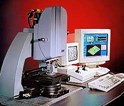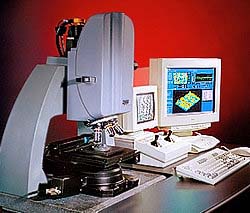Zygo 3D Surface Profiler Sports Improved Data Acquisition and Scanning Functionality

Enhanced features and capabilities that improve data acquisition and scanning functions have been added to the NewView 5000 3D Surface Profiler from Zygo Corporation (Middlefield, CT).
Upgrades and Improvements
One key new feature is a patented data acquisition and analysis module that offers superior repeatability and performance.
Other additions include:
• a redesigned piezo-based scanner that delivers increased scan range, performance, and reliability
• vertical scan and autofocus range up to 5 mm
• a 1X and 100X objective
• a full line of long-working distance objectives

The Basics
Delivering quick, repeatable surface texture measurement and analyses on a variety of surfaces in seconds, the NewView 5000 measures materials using non-destructive methods under ambient conditions without the need for sample preparation. The system also uses the firm's Windows NT-based MetroPro metrology software that provides high-resolution 3D graphics and analysis tools to perform map surface topography and provide quantitative surface parameter data.
Performance features include:
• high stability and rigid construction for vibration dampening
• low-noise, closed-loop scanning transducer that offers linear motion over the full range
• automated z-axis stage for precise positioning and repeatability
• automated X-Y sample positioning staging for scanning multiple sites or stitching data sets unattended
• manual or automatic focus
How the Profiler Works
This 3D surface profiler is based on scanning white-light interferometry, a technique in which a pattern of bright and dark lines (fringes) result from an optical path difference between a reference and a sample beam. Incoming light is split inside an interferometer, one beam going to an internal reference surface and the other to the sample. After reflection, the beams recombine inside the interferometer and undergo constructive and destructive interference, which produces the light and dark fringe pattern.
In the NewView 5000, a precision vertical scanning transducer and camera together generate a 3D interferogram of the surface, which is processed by the computer and transformed by frequency domain analysis resulting in a quantitative 3D image.
For more information, contact Zygo Corp., Laurel Brook Rd., Middlefield, CT 06455-0448. Tel: 860-347-8506; Fax: 860-347-8372.
